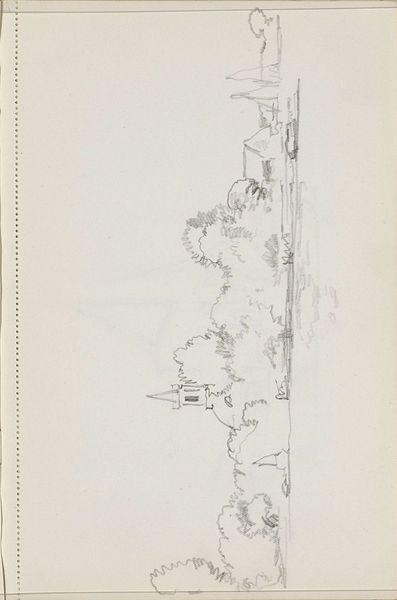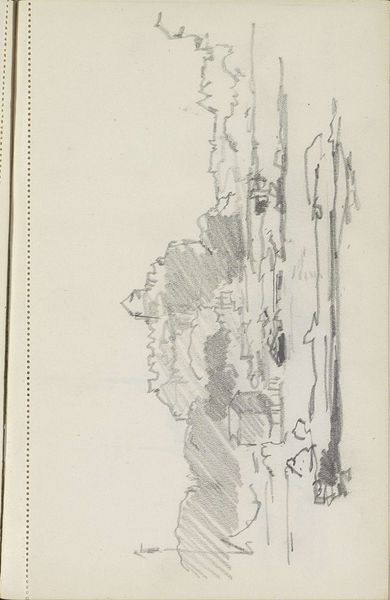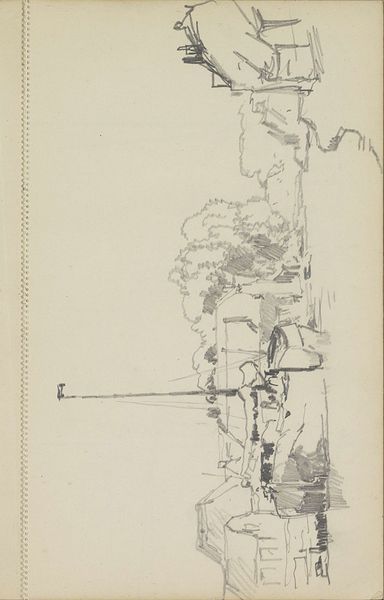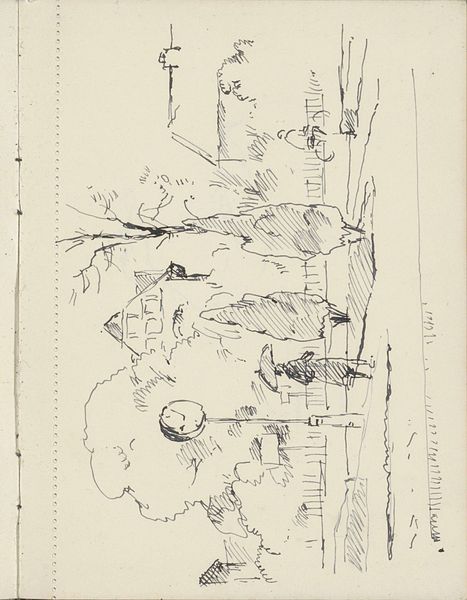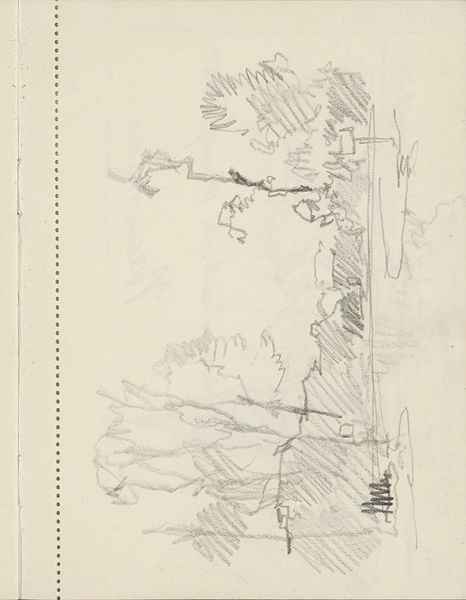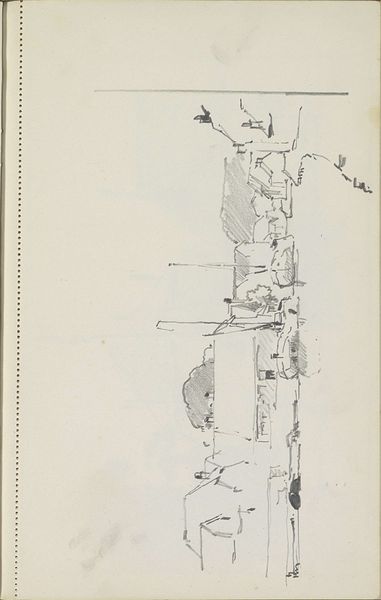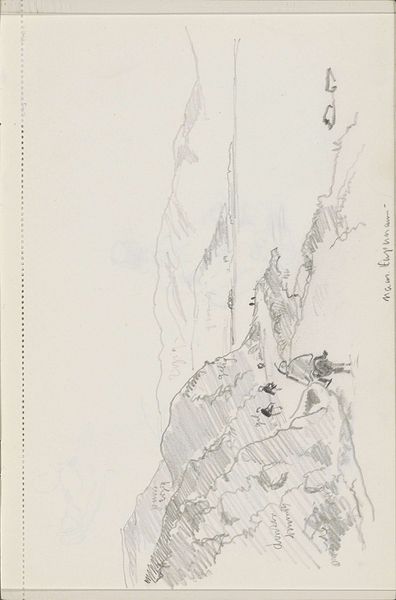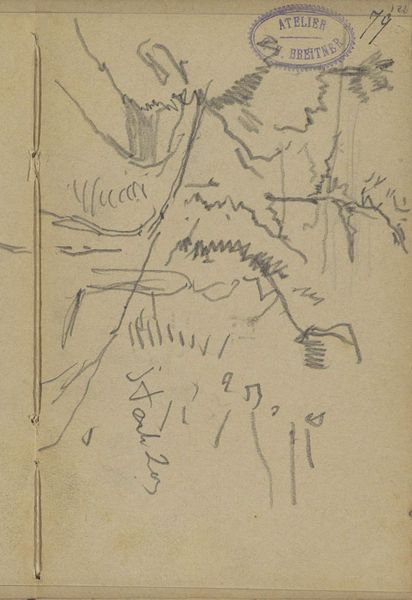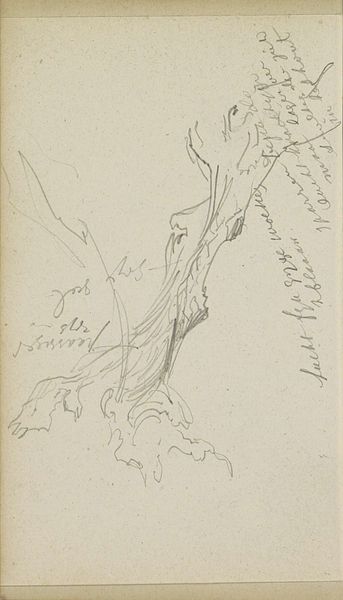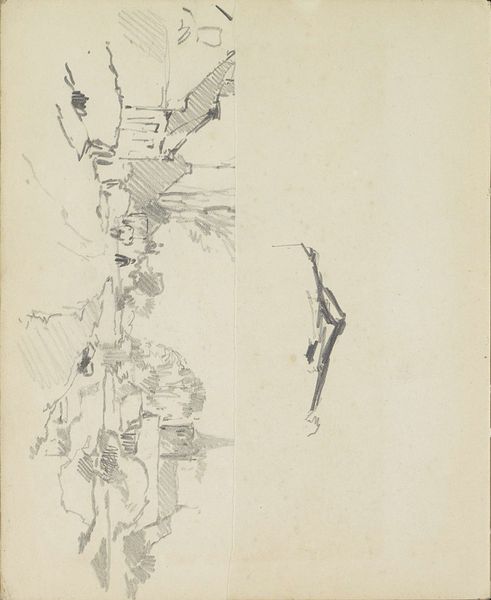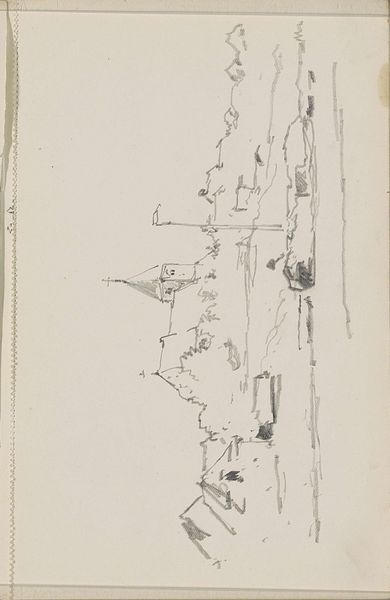
Copyright: Rijks Museum: Open Domain
Editor: This is "Bridge with Two Arches over a Moat," a pen and pencil drawing by Cornelis Vreedenburgh, made sometime between 1890 and 1946. It's got that raw sketchbook quality – almost feels like a secret glimpse into the artist's thought process. What strikes you when you look at this? Curator: Well, it feels incredibly intimate, doesn't it? Like finding a page torn straight from Vreedenburgh's personal sketchbook. You can almost feel the artist sitting there, capturing a fleeting moment in time. The real beauty lies in its simplicity – a testament to how a few well-placed lines can evoke such a strong sense of place and mood. There's a beautiful, quiet confidence in the sketch's directness that feels particularly appealing. Editor: So, it's more about the feeling than the accuracy of representation? Curator: Absolutely! It's an impressionistic piece, more focused on conveying a feeling or an idea of the bridge rather than a photorealistic rendering. Consider the soft pencil work against the bolder strokes of ink: do you think that contrast intentionally reflects how memory softens with time, becoming more fragmented? And, more importantly, does that prompt *you* to reflect? Editor: I see what you mean... it does have a dreamlike feel. I wouldn’t have considered the passage of time, but the sketch-like style feels much more timeless now that you mention that aspect. Curator: That’s the beauty of art, isn’t it? How a simple sketch can trigger a deeper conversation and bring us a bit closer to understanding an artist's mind— and our own. It's not just a picture of a bridge; it's a snapshot of a moment, preserved forever. Editor: I'm going to pay more attention to how unfinished work can spark reflection next time, thanks.
Comments
No comments
Be the first to comment and join the conversation on the ultimate creative platform.
